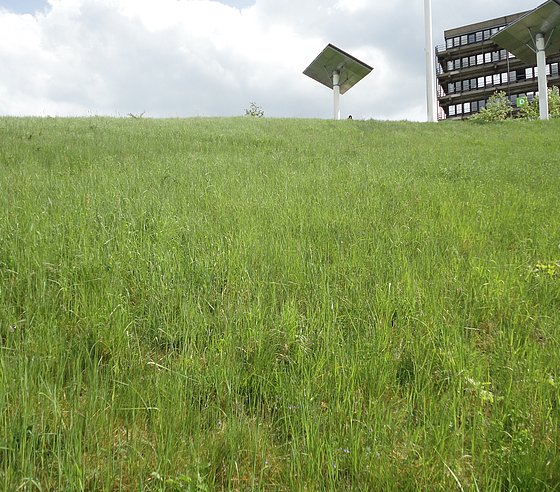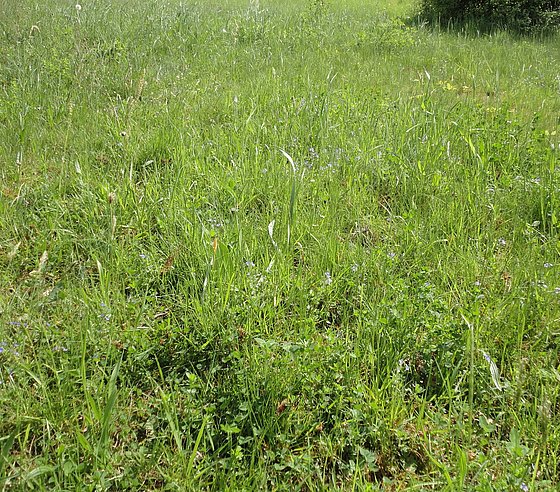


May - species-rich grassland
Grassland refers to various ecosystems dominated by grasses that have been created through human utilisation. Depending on the intensity and method of cultivation, grassland can be classified as either intensively or extensively utilised. Intensively used grassland is mown up to five times a year (usually for silage) or grazed by large numbers of livestock. It is heavily fertilised and consists of only a few (five to ten) plant species. It is dominated by fast-growing grasses. In contrast, extensively used grassland is mown once or twice a year, depending on the location, and grazed with low stocking rates and minimal fertilisation. Due to the lower utilisation intensity, more plants come into flower, and a variety of herbaceous species grow alongside numerous grass species. However, yields from extensively used grassland are lower than those from intensive use. Historically, extensive grassland was a common feature of agricultural land, often used to produce hay for livestock. However, due to the intensification of agriculture, the area of extensively used grassland is steadily decreasing (currently accounting for only around 14% of the total grassland area). The area of all types of grassland is also decreasing drastically due to the changing agricultural structure, as grassland is being converted into arable land. Overall, land consumption in Germany remains high, resulting in grassland being converted into building land, industrial estates or roads.
Ecological importance of species-rich grassland
Grasslands that are rich in species are of great importance for preserving biodiversity, as well as for protecting soil, water and the climate. In Germany, 40% of endangered flowering plants are primarily found in grassland. The decline in species-rich grassland is also probably one of the main reasons for the significant decrease in wild bee and butterfly populations, as they lack the appropriate habitat. As grassland soil is covered with plants all year round, it is protected against erosion, and rainwater is retained more effectively on the surface, allowing it to seep in. As little or no fertiliser is applied, the groundwater beneath these areas is also protected. Grassland areas can also contribute to carbon storage depending on the amount of humus in the soil.
Winged hill - species-rich grassland on the Grifflenberg campus?
There is also grassland with medium species richness on the Grifflenberg campus, although it is rarely referred to as such. This can be found on the Flügelhügel. This area is better known as a place for students to relax at the end of the day or for guests to enjoy the view of the valley. The Flügelhügel is subject to regular maintenance cutting, usually once or twice a year. Unfortunately, the grass cuttings currently have no use. However, this has a positive effect on biodiversity, with almost 20 grass species and 40 herbaceous plant species identified during vegetation surveys for a bachelor's thesis (Ms Chamaine Nawrath). Such diversity is probably unusual for a university campus, so the Flügelhügel is a valuable botanical feature of the University of Wuppertal.
